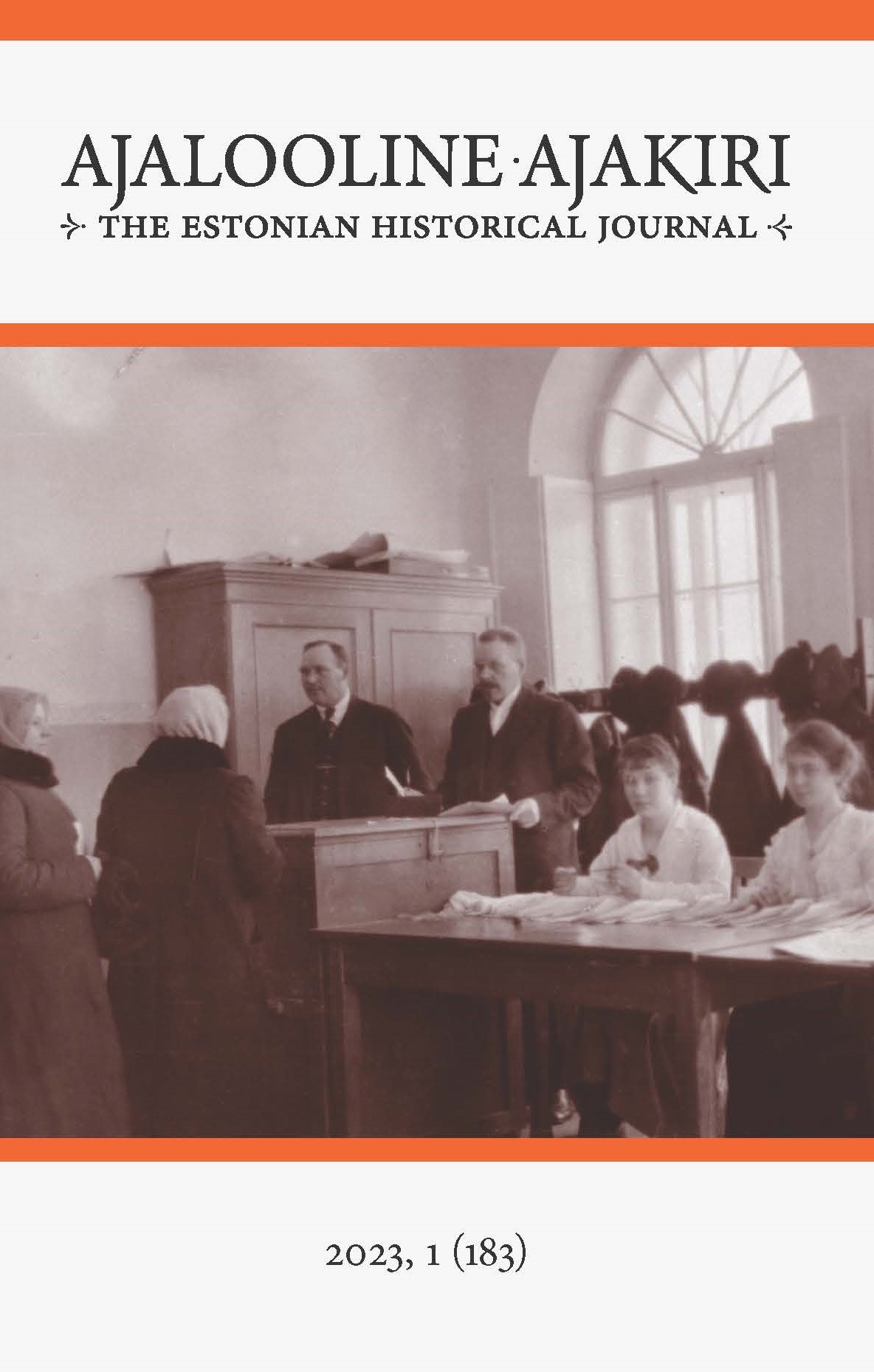Toetus enamlusele Eestis novembrist 1917 jaanuarini 1918
DOI:
https://doi.org/10.12697/AA.2023.1.01Keywords:
Bolsheviks, elections, Constituent Assembly, political parties, EstoniaAbstract
Abstract: Support for Bolshevism in Estonia from November of 1917 to January of 1918
Only a few weeks after the Bolsheviks stormed to power, elections for the All-Russian Constituent Assembly were held. They were also held in the Estonian province of the Russian state. The Bolsheviks claimed a clear victory in Estonia with two-fifths of the votes cast in their favour. At the end of January 1918, elections were held for the Estonian Constituent Assembly to determine the political organisation of Estonia. This offers a unique opportunity to study the electoral impact of experiencing really existing Communism during the first months after the October Revolution. The Estonian Assembly elections, however, were not fully completed since the Bolsheviks abruptly stopped the proceedings before approximately a third of the municipalities were able to cast their votes. Still, as reported by previous authors, the partial election results show that during this short period, the Bolsheviks saw their support decrease by a few percentage points.
Eduard Laaman and Joosep Saat, both contemporaries of that time, have completed the most thorough analyses of the first few months of Bolshevik rule in Estonia, with the former representing the non-Communist viewpoint, and the latter adhering to the Communist line. Other authors have largely followed their arguments. Both Laaman and Saat agree that the agrarian policies of the Estonian Bolsheviks, which were more hard-line than those of their Russian comrades in aiming for immediate agricultural collectivisation, was one of the main reasons why the Bolsheviks saw their support dwindle, since most (semi-)landless folk wanted land of their own. Laaman also lambasted the urban economic policies of socialisation of the enterprises, which saw the plight of industrial workers in the urban areas worsen during the ‘reign of the proletariat’. Both agree that the occasionally violent seizure of power in the municipalities could also have been a detriment since the previous local governments had democratic legitimacy. Finally, an important change was that by the time the Estonian Assembly elections were held, all other political parties had begun supporting and campaigning for the independence of Estonia. The Bolsheviks and the bolshevised Russian troops stationed in Estonia were alone in opposing this.
This article has four aims. First, it seeks to check and correct the election results as computed by previous (Soviet) historians. Second, it intends to map the results from both elections by municipalities, which has not been done before, in order to gain a precise understanding of spatial variations in the support for Bolshevism. Third, it aspires to arrive at an exact comparison of the election results by comparing only those municipalities (N = 219) in which both elections were held and where the results were published, which has not been done by previous authors. Fourth, using the results from these municipalities, it seeks to explain the changes in the support for Bolshevism during this short but dynamic period.
The article’s main sources are the official county and voting station protocols for both elections. Additionally, results published in contemporary newspapers are also used in some cases. For the most part, both elections were held on the same principles and procedures, which fully justifies their comparison. It is important to note that at that time, the Bolsheviks did not actively and unequivocally tamper with the election results nor did they engage in voter intimidation or sabotage the campaigns of other political parties, as was the rule later on.
The main results are as follows. First, the article proved that for some municipalities, the calculations of previous authors are incorrect. Here, it is estimated that the Bolsheviks got 40.2% of the vote in the elections for the Russian Constituent Assembly. In the unfinished elections for the Estonian Constituent Assembly, the Bolsheviks gained 36.9% of the vote.
Second, an exact comparison was arrived at by comparing only the municipalities for which we have results from both elections. With this limitation, the Bolshevik vote decreased from 41.8 to 36.9%, which in relative terms means a drop of 12%. Still, the relative vote share of other leftist political parties (the Socialist-Revolutionaries and the Social Democrats) decreased even more, meaning that the Bolsheviks became more dominant on the left wing of the political spectrum. The vote share of the centrist Labour Party and the right-wing political parties increased in relative terms by a quarter and a third, respectively.
Third, looking at the spatial distribution of Bolshevik support in the elections for the Russian Assembly, greater Bolshevik support stands out in urban centres, in the north and the southeast of the country. However, there are substantial differences in this distribution, frequently even among neighbouring municipalities. Such fluctuations cannot be explained by structural (compositional) factors. These discrepancies decreased in the later election. This means that municipalities with greater Bolshevik support in the first election saw a greater decrease in the later election, and municipalities with lower Bolshevik support in the first election mostly recorded an increase in their support in the later election.
Fourth, in terms of explaining the changes in Bolshevik support, it is claimed that increasing understanding of the political landscape among the electorate evened up the vote share across socio-demographically similar municipalities. Also, it is evident that the Bolsheviks were able to gain the support of previous Socialist-Revolutionary and Social Democratic supporters. The article found support for the hypothesis that the Bolshevik vote share fell more in the more industrial areas. Increased voter participation and land ownership rates in the rural municipalities, on the other hand, were shown to have no effect on the change in Bolshevik võte share. Finally, the article questioned if the timing of local Bolshevik action in taking over local municipalities or creating local soviets had an impact on the change in the Bolshevik vote. The analysis showed this to be true for Harju County but the data on local political actions is too flawed to say anything conclusively about Estonia more generally.

